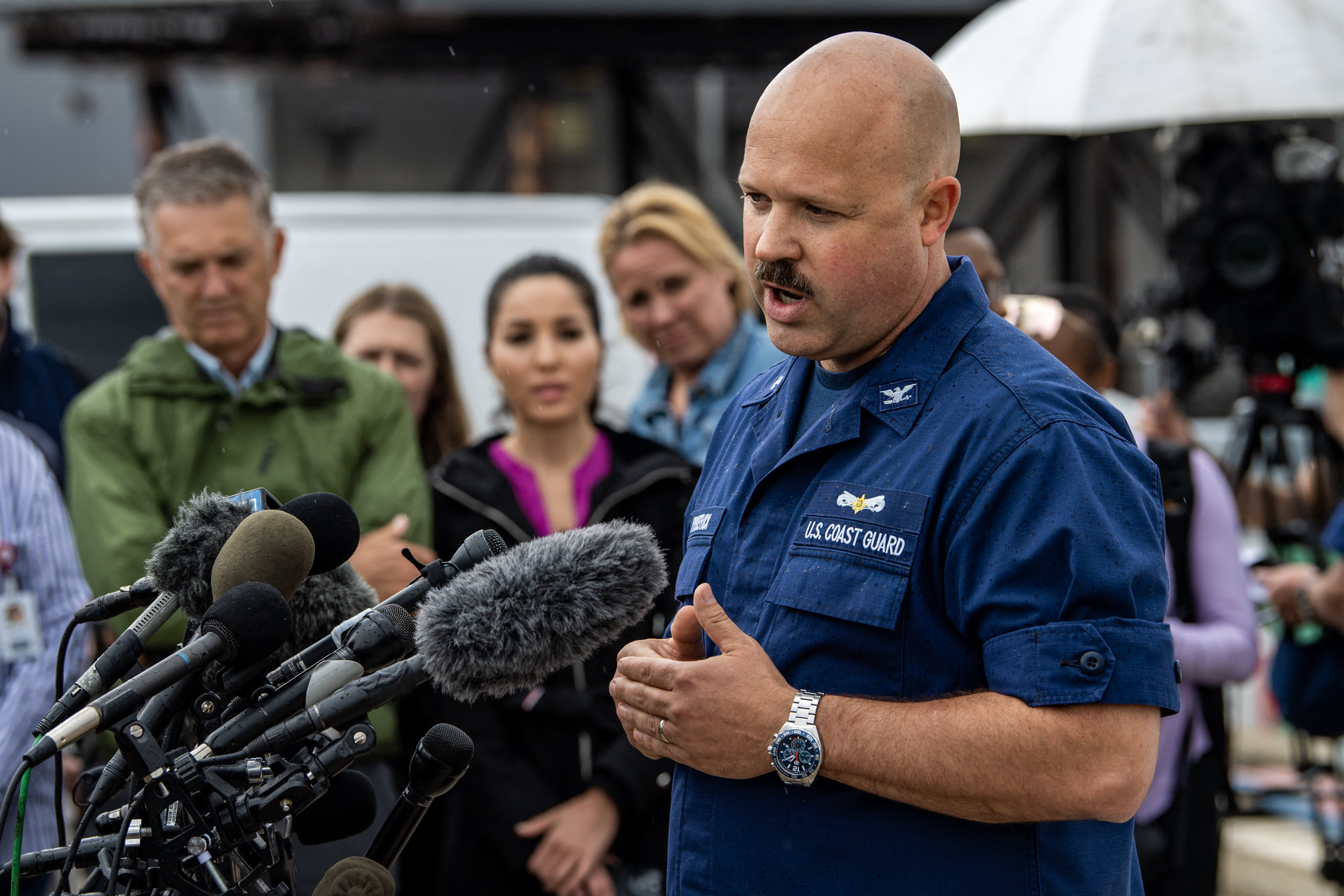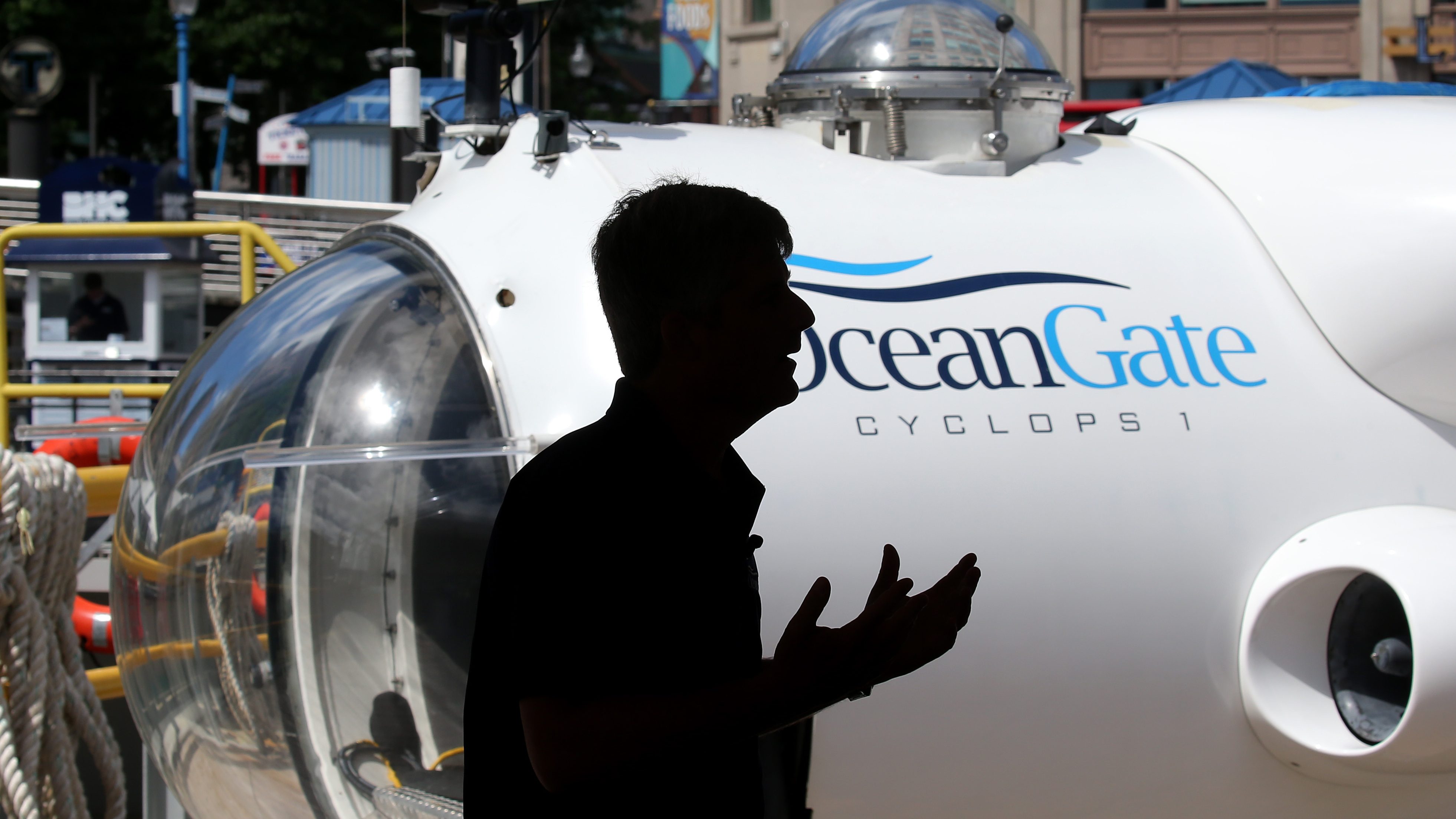A Canadian military surveillance aircraft detected underwater noises as a massive search continued early Wednesday in a remote part of the North Atlantic for a submersible that vanished while taking five people down to the wreck of the Titanic.
A statement from the U.S. Coast Guard did not elaborate on what rescuers believed the noises could be. However, it offered a glimmer of hope for those lost aboard the Titan as estimates suggest that as little as a day's worth of oxygen could be left if the vessel is still functioning.
Meanwhile, questions remain about how teams could reach the lost submersible, which could be as deep as about 12,500 feet (3,800 meters) below the surface near the watery tomb of the historic ocean liner. Newly uncovered allegations also suggest there had been significant warnings made about vessel safety during its development.
Lost aboard the vessel are pilot Stockton Rush, the CEO of the company leading the expedition. His passengers are a British adventurer, two members of a Pakistani business family and a Titanic expert.
The Coast Guard wrote on Twitter that a Canadian P-3 Orion had “detected underwater noises in the search area.” Searchers then moved an underwater robot to that area to search. However, those searches “have yielded negative results but continue.”
“The data from the P-3 aircraft has been shared with our U.S. Navy experts for further analysis which will be considered in future search plans,” the Coast Guard said.
Three C-17 transport planes from the U.S. military have been used to move commercial submersible and support equipment from Buffalo, New York, to St. John’s, Newfoundland, to aid in the search, a spokesperson for U.S. Air Mobility Command said.
The Canadian military said it provided a patrol aircraft and two surface ships, including one that specializes in dive medicine. It also dropped sonar buoys to listen for any sounds from the Titan.
Rescuers have been racing against the clock because even under the best of circumstances the vessel could run out of oxygen by Thursday morning.
Feeling out of the loop? We'll catch you up on the Chicago news you need to know. Sign up for the weekly Chicago Catch-Up newsletter.
In addition to an international array of ships and planes, an underwater robot had started searching in the vicinity of the Titanic and there was a push to get salvage equipment to the scene in case the sub is found.
Authorities reported the carbon-fiber vessel overdue Sunday night, setting off the search in waters about 435 miles (700 kilometers) south of St. John’s.
The submersible had a four-day oxygen supply when it put to sea around 6 a.m. Sunday, according to David Concannon, an adviser to OceanGate Expeditions, which oversaw the mission.
CBS News journalist David Pogue, who traveled to the Titanic aboard the Titan last year, said the vehicle uses two communication systems: text messages that go back and forth to a surface ship and safety pings that are emitted every 15 minutes to indicate that the sub is still working.
Both of those systems stopped about an hour and 45 minutes after the Titan submerged.
“There are only two things that could mean. Either they lost all power or the ship developed a hull breach and it imploded instantly. Both of those are devastatingly hopeless,” Pogue told the Canadian CBC network on Tuesday.
The submersible had seven backup systems to return to the surface, including sandbags and lead pipes that drop off and an inflatable balloon. One system is designed to work even if everyone aboard is unconscious, Pogue said.
Meanwhile, documents show that OceanGate had been warned there might be catastrophic safety problems posed by the way the experimental vessel was developed.
David Lochridge, OceanGate’s director of marine operations, said in a 2018 lawsuit that the company’s testing and certification was insufficient and would “subject passengers to potential extreme danger in an experimental submersible.”
The company insisted that Lochridge was “not an engineer and was not hired or asked to perform engineering services on the Titan.” The firm also says the vessel under development was a prototype, not the now-missing Titan.
The Marine Technology Society, which describes itself as “a professional group of ocean engineers, technologists, policy-makers, and educators,” also expressed concern that year in a letter to Rush, OceanGate’s chief executive. The society said it was critical that the company submit its prototype to tests overseen by an expert third party before launching in order to safeguard passengers. The New York Times first reported about those documents.
The search for the missing vessel has drawn international attention. In Dubai, where the missing British adventurer Hamish Harding lives, Crown Prince Hamadan bin Mohammed Al Maktoum wrote: “Dubai and its people pray for their safety and hopeful return home.”
Others aboard include Pakistani nationals Shahzada Dawood and his son Suleman, whose eponymous firm invests across the country. In Pakistan's port city of Karachi, employees at his firms said they prayed for the two's safe return, as did government officials. French explorer and Titanic expert Paul-Henry Nargeolet also was on the vessel.



